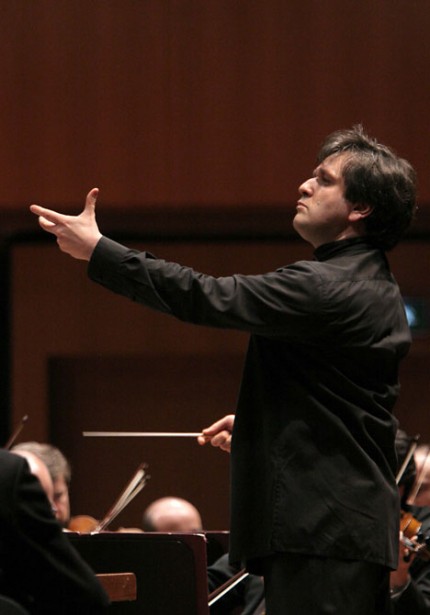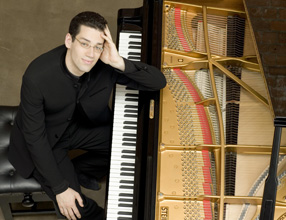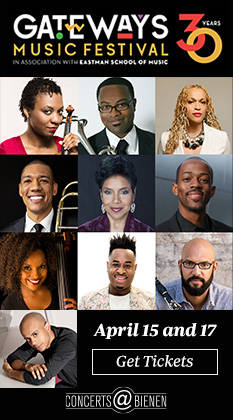Pappano returns to the CSO with an operatic approach to Mendelssohn

In many ways, Antonio Pappano’s return to Chicago is a homecoming of sorts. Born in London to Italian parents, Pappano spent part of his early career at Lyric Opera as a repetiteur, later conducting there. Pappano was also assistant to Daniel Barenboim during his early years as music director of the Chicago Symphony Orchestra, and first conducted the CSO back in 1996, though he has not been back to Symphony Center in nearly three years.
Tapped to succeed Bernard Haitink as the music director of Covent Garden–the youngest conductor to have been selected for that royal post–Pappano is in high demand internationally and even hosts his own BBC television series about opera.
Given how associated Pappano is with that art form, it is a bit surprising that his current CSO subscription program, heard Thursday night, is completely instrumental.
Sporting a Mandarin-style black shirt, Pappano conducted a chamber orchestra-sized CSO in the subscription premiere of Mozart’s Symphony No. 23 in D Major, K. 181. One of the earliest Mozart symphonies ever played by the CSO, Pappano’s style, sans baton, was reminiscent of his mentor Barenboim’s Mozartean approach: brisk, lively and always forward-looking, driving slightly ahead of the beat to create maximum excitement.
Pappano and his tight, buoyant and well-balanced ensemble made a wonderful case for this neglected overture-like gem, particularly Michael Henoch’s superb oboe solo in the middle section.

Pianist Jonathan Biss joined Pappano for a highly personal account of the Beethoven Piano Concerto No. 2 in B-flat Major, Beethoven’s earliest piano concerto even though it was the second published.
It was clear from Pappano’s slow and sentimental orchestral introduction that he has a highly Romanticized view of this concerto, which is really still expansive Classicism. With his first entrance, Biss sped things up and Pappano scaled back the orchestral sonority to effectively complement Biss’s transparent, pliant and delicate approach.
Unfortunately, the Chicago native’s cadenza was marred by multiphonic hearing aid feedback, which shrilly buzzed and squeaked as if the solo had been scored as an avant-garde duo for Theremin and piano. That Biss never lost his composure or concentration during the electronic assault says a lot about his musicianship and character.
There were some balance issues in the slow movement, which was almost syrupy in its orchestral component, but Pappano and Biss were back on the same page for the playful and spirited Rondo finale.
Mendelssohn’s Italian Symphony (No. 4) was a favorite piece of former CSO music director Sir Georg Solti and is being used later in the week as the centerpiece for the first of this season’s popular Beyond the Score programs.
Pappano’s approach to the familiar warhorse is unapologetically operatic, and at times, things were so Italian and melodramatic that it was as if we were hearing Verdi rather than Mendelssohn.
Lines were nicely layered and balanced with plenty of transparency but sometimes the performance sagged under its own weight. For those who prefer crisp and light Mediterranean sunshine shining through this work, Pappano clearly hears Late Romantic storm clouds on the horizon. Sadly, the deterioration of the principal horn’s playing significantly marred two of the movements Thursday night, particularly the solos in the third movement.
The program will be repeated 8 p.m. Saturday. Mendelssohn’s Italian Symphony will be heard as part of the season’s first Beyond the Score program 1:30 p.m. Friday and 3 p.m. Sunday. cso.org; 312-294-3000.
Posted in Performances





Posted Nov 12, 2010 at 6:02 pm by Mark
I agree that the principal horn’s passages, particularly in the third movement of the symphony, did not come off well. It was very disappointing. Sometimes quieter exposed passages are hard to bring off, and that was certainly the case last night.
I’m not sure I agree about the reservations of the conducting during the Beehtoven Second Piano Concerto. It started taut and brisk at first, but then became more mellow. In my experience, it is not an uncommon approach. Overall, the conducting seemed pretty good most of the night, let the music speak for itself while keeping things moving briskly. I’m not sure it was particularly compelling, but it was certainly enjoyable.
From my seats, I did not hear the hearing aid problem. However, it seemed to me that the microphone placed in front of the piano was there to amplify some of the sound in the hall. That I found disturbing. This simply does not happen in the great concert halls of the world. In this country, I don’t recall every experiencing this at Symphony Hall in Boston, Carnegie in New York or Severance Hall in Cleveland. I’m not sure it was even necessary; Orchestra Hall is usually kind to this instrument. I enjoyed the pianist very much. Don’t know if I want to hear him play the Emperor concerto or a Brahms piano concerto, but a Mozart concerto or the Beethoven Fourth would be a treat, I’m sure.
Posted Nov 13, 2010 at 11:52 pm by J.
Mark, I assume that the microphones — which are all over, including over the audience — are for potential broadcast online and on the radio or recording for archival purposes or for the performers. Since they now have all the equipment built in for recording, I presumed that they simply recorded every concert — might as well. I’d be surprised if they were actually using any sort of amplification in the hall. There are speakers all over the place, but I assume that they’re reserved for public address, jazz, hall rental events or other events that use amplified sound.
Is there some sort of very subtle, cutting-edge acoustical enhancement going on during symphony concerts? I certainly don’t hear it, but then again, that would be the point — to invisibly (inaudibly?) compensate for acoustical issues in the hall, which Orchestra Hall has always had, even after the major 1997 renovation that was meant to fix them. (The main complaint has always been that the room is on the “dead” side, not to mention all those horrible under-balcony seats, with fans praising the hall’s “intimacy.”) Orchestra Hall is a beautiful architectural treasure, now more than ever, but, sound-wise, it’s probably fair to say that Chicago has always had a better orchestra than venue.
I did a little Googling to confirm the above assumptions, but came up empty — no answer either way. Perhaps the intrepid reporters at Chicago Classical Review can provide a definitive answer.
I *do* agree about the principal horn, Dale Clevenger, who has been there since 1966! He’s had a long, distinguished, exceptional career at the top of his profession. Recently, however, his playing has “deteriorated,” as the review mentions, to the point that he’s unpredictable and can be heard struggling. This wasn’t the first otherwise excellent performance majorly marred by his flubs and clams. Unlike the odd string player who may be past his or her prime, the principal horn, by virtue of the prominence of his part, has nowhere to hide, and a sub-par performance really hurts. Were I he, I’d look reality squarely in the eye, try to avoid going out on an unpleasant note — lots of unpleasant notes, actually — soak up some well-deserved tributes, and take my generous pension.
Otherwise, it was a lovely concert. The Mendelssohn is lots of fun — I perceived no melodramatic sag — and Biss is a very fine player. I heard *something* along the lines of the hearing aid business described in the review — I didn’t know what it was — but it wasn’t a significant problem for me as it apparently was for the reviewer.
Posted Nov 15, 2010 at 7:33 pm by Mark
Perhaps I was wrong, but I have always felt that the sound in Orchestra Hall was slightly miked since the renovation, particularly when sitting upstairs. It is still an improvement on balance compared to the Hall’s acoustical qualities before the renovation, but the Hall continues to have reverberation issues–that is, not enough of it. I normally sit downstairs now. This is one of the few concert halls I’ve been to when I find the sound better on the main floor. Also, in other halls, I have not seen microphones placed in front of the piano like that for concert recordings. It would seem to require a lot of editing afterwards to integrate the piano with the orchestra for the broacast recording. So I still think that the piano sound was slightly miked, but I still enjoyed the pianist very much.